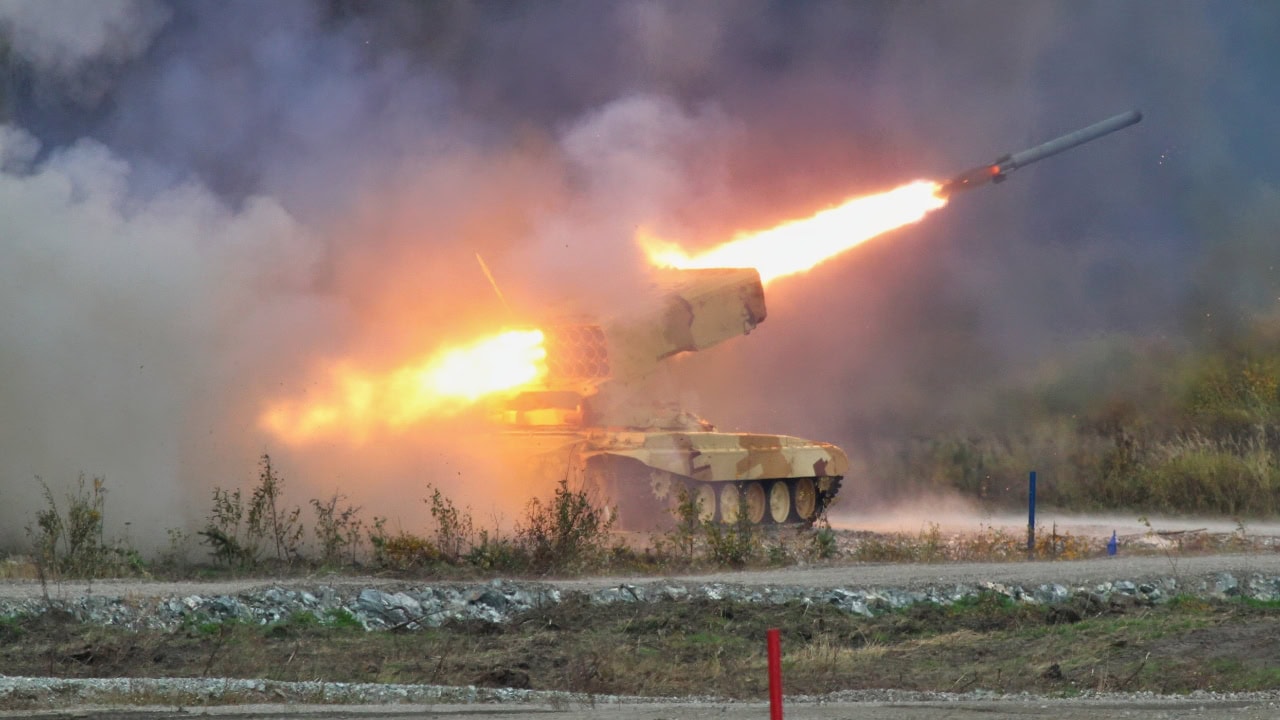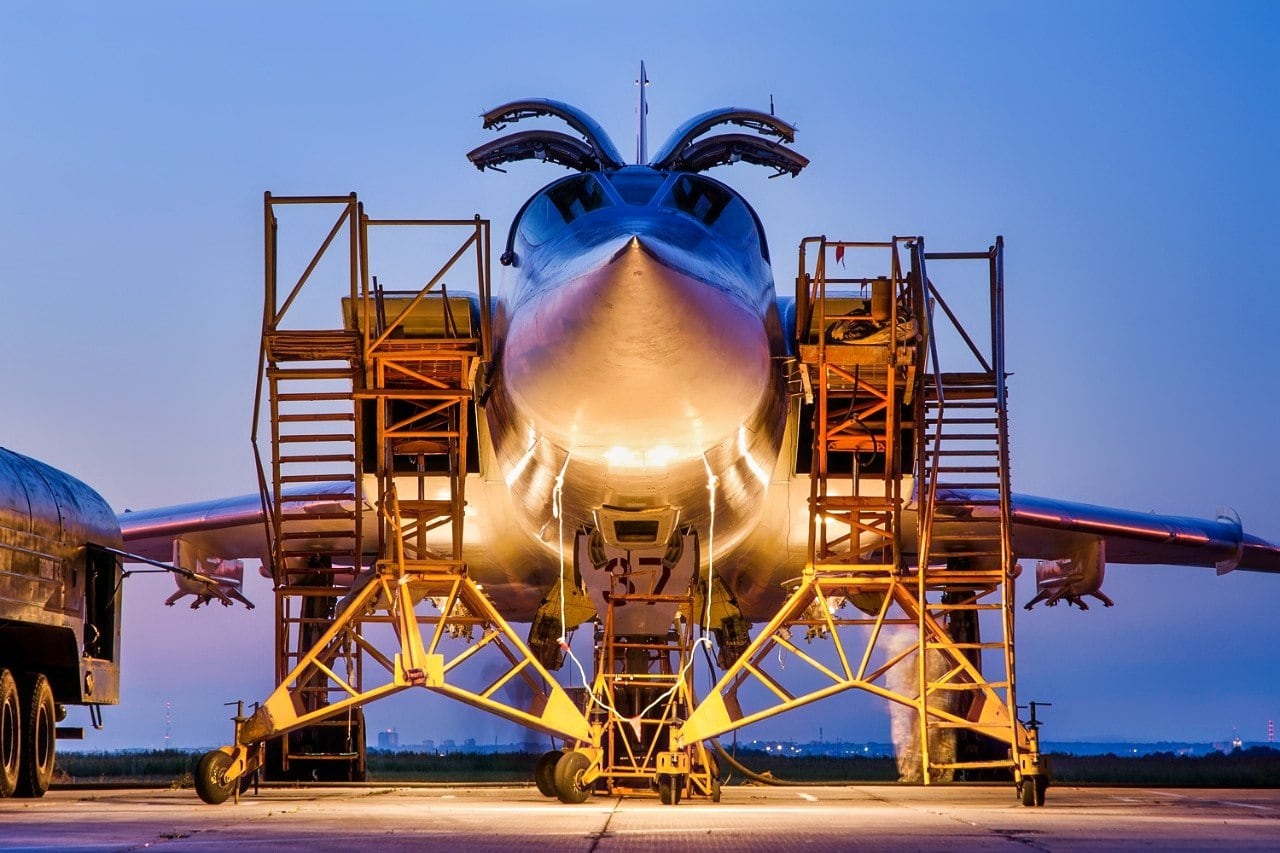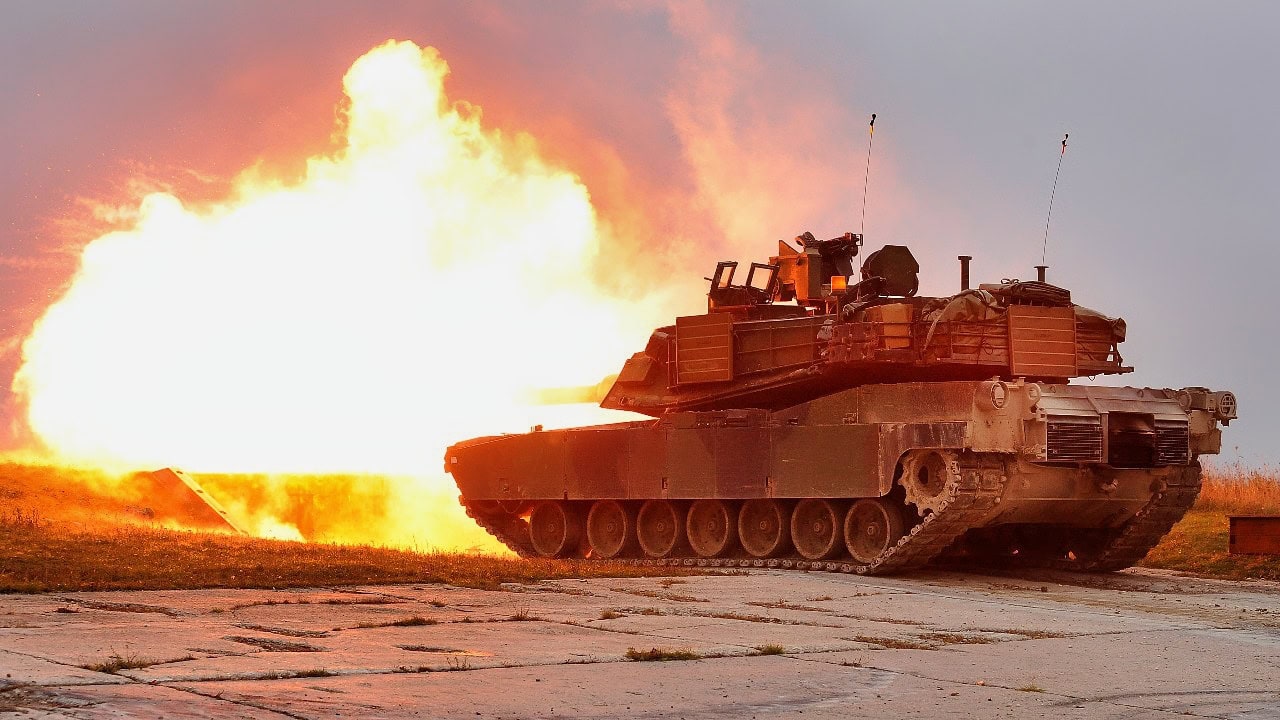Summary and Key Points: Ukraine’s President Volodymyr Zelensky’s 2024 “Victory Plan” aims to end the war with Russia by securing increased military aid and NATO security guarantees.
-This new strategy temporarily sets aside preconditions like full territorial return and war criminal trials, focusing instead on bolstering Ukraine’s defense against Russian aggression.

Ukraine War TOS-1A. Image Credit: Creative Commons.
-However, NATO membership remains a contentious issue, with major Western powers like the U.S. and Germany reluctant to commit.
-In response to uncertain Western support, some Ukrainian officials have suggested the possibility of developing nuclear weapons, though this remains unofficial.
-The plan highlights deepening divides in Western diplomatic circles and ongoing challenges in securing aid.
What Does Ukraine Need to Survive the War?
In Autumn 2024, Ukrainian President Volodymyr Zelensky presented his plan for victory in the war with Russia. If followed through, it was supposed to achieve a victorious end to the war this year. The plan is composed of five main points plus three classified appendices.
Supposedly, only those allied governments that have, to date, supplied Ukraine with military hardware and political and economic support were briefed on the latter component of the plan. The contents are unknown, but there is the suggestion that one of the points advocates for a nuclear option for Ukraine.
This more recent plan is actually a less ambitious roadmap than the much more encompassing peace plan that Zelenskiy rolled out in 2023. This new victory plan calls for—at least temporarily—putting aside certain previously stated preconditions. These include the return of all seized Ukrainian territory, trials for war criminals, and Russia paying reparations.
But in place of these demands, which would be the norm for any nation that had been invaded and devastated by Russia’s KGB dictatorship as Poland was in 1939 by Nazi Germany, Zelenskiy is calling for a measurable increase in the Western military aid for Ukraine. In addition, the Ukrainian president is also demanding certain security guarantees.
“Victory Plan” Conditions
The most divisive geopolitical point in Zelensky’s proposals was NATO membership. This issue has been complicated by the fact that one of the major foreign policy think tanks in the US, the Council on Foreign Relations (CFR), has declared it off the table.
While advocating that the US and others hold Ukraine at arm’s length, this organization has simultaneously moved closer to Moscow by maintaining a semi-secret regular dialogue with Russian officials, including under-the-radar visits to Moscow. Their chief interlocutor is ironically one of the most notably disliked (in the West and Ukraine) members of Russian President Vladimir Putin’s cabinet, Foreign Minister Sergei Lavrov.
Writing on the CFR website, those in dialogue with Lavrov have somewhat confusingly written, “The first and most controversial plank of [Zelenskiy’s] Victory Plan is the plea for Ukraine to be granted North Atlantic Treaty Organization (NATO) membership. This is unlikely to happen while Ukraine is still fighting Russia because it would draw NATO into a conflict with a nuclear-armed state.
“While many NATO members, particularly in Eastern Europe, have signaled strong support for Ukraine’s membership, the two most important members—the United States and Germany—have been unwilling to do so because they view it as too provocative.”

Tu-22M Bomber from Russia
It is somewhat contradictory to talk about a peace plan for Ukraine when the most senior former members of the US foreign policy establishment are declaring it to be dead on arrival. “Like an aeroplane that has been told it is not going to be provided with any engines, where does Ukraine go from here,” said a colleague in Kyiv who is heavily involved in supporting the war effort.
Those backing Ukraine in the conflict with Russia have pointed out that former US officials engaging in informal dialogue with Moscow officials have “caused a divide within the community of American diplomats, foreign policy scholars, and national security professionals.”
“I worry about what messages might be conveyed with that and the implicit signal that we’re desperate for a deal,” said Bradley Bowman, a former Army officer and Senate aide who studies political-military issues at the Washington-based Foundation for Defense of Democracies who spoke to NBC News in 2023 when the interactions with Lavrov had only begun.
“Right now, what we really want to do is isolate and put pressure on Putin,” which empowering Lavrov in this manner is not likely to accomplish.
Nothing about that need to push Putin into a corner has changed, said US Defense Department academics who spoke to 19FortyFive. “Giving Lavrov or others that the impression that there is oxygen on the path to marginalizing the pro-Ukraine stance of NATO and the US is only exacerbating the tension between our two countries. It is not a path to peace.”
Military Aid and Other “Special” Weapons
To fulfill Zelenskiy’s plan to achieve victory, he is asking for increased military aid from the US and the West. But. There are plenty of naysayers on this score. The most common prediction among them is that maintaining even the current level of aid will be difficult in the future.

MiG-35 Russian Air Force Fighter.
This puts Ukraine in a position where it could be forced to consider “other measures” to guarantee its future security. Most notably, these include, as Zelenskyy previously mentioned, the possibility of Kyiv acquiring its own nuclear arsenal.
In December 2024, it was reported by the BBC that voices in the Ukraine defense community had suggested that “a country serious about defending itself cannot rule out a return to nuclear weapons, particularly when its most important ally, the United States, may prove unreliable in the near future.”
Ukrainian officials had denied reports that a paper circulating within the Ministry of Defence had suggested a simple nuclear device could be developed in a matter of months. This program is not on the agenda now. Still, Alina Frolova, a former deputy defense minister, said the leak of such a sensitive and classified memo may not have been accidental.
“That’s obviously an option which is in discussion in Ukraine, among experts,” she says.
“In case we see that we have no support [from NATO or Western allies] and we are losing this war, and we need to protect our people … I believe it could be an option.”
About the Author: Reuben F. Johnson
Reuben F. Johnson is a survivor of the February 2022 Russian invasion of Ukraine and is now an Expert on Foreign Military Affairs with the Fundacja im. Kazimierza Pułaskiego in Warsaw. He has been a coultant to the Pentagon, several NATO governments and the Australian government in the fields of defense technology and weapon systems design. Over the past 30 years he has resided in and reported from Russia, Ukraine, Poland, Brazil, the People’s Republic of China and Australia.

